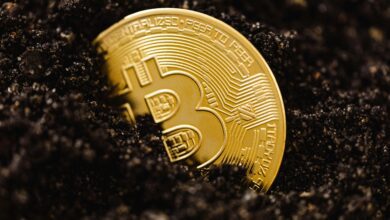Golden Refuge: The Impact of Geopolitical Tensions on Demand and Prices

In an increasingly interconnected world, the ripples of geopolitical tensions resonate far beyond the borders of nations, finding their way into the very fabric of global markets. Among the myriad assets that investors turn to during times of crisis, gold stands out as a time-honored refuge—its allure rooted in a legacy that spans centuries. As uncertainties mount, whether from escalating conflicts, trade disputes, or economic sanctions, the demand for gold often surges, driving its prices to new heights. This article delves into the intricate relationship between geopolitical events and gold, exploring how moments of instability heighten its appeal as a safe haven. We’ll examine the market's reactions to key geopolitical developments, analyze the trends in gold demand during periods of uncertainty, and provide insight into why this precious metal remains a cornerstone of investment strategy in turbulent times. Join us as we unpack the dynamics at play in the gold market and uncover the factors that influence its value amid the ever-shifting landscape of global politics.
- 1. "The Safe Haven Appeal: Understanding Gold's Role in Times of Crisis"
- 2. "Market Reactions: How Geopolitical Events Drive Fluctuations in Gold Prices"
- 3. "Investing in Uncertainty: Trends in Gold Demand Amid Global Turmoil"
1. "The Safe Haven Appeal: Understanding Gold's Role in Times of Crisis"
Gold has long been regarded as a safe haven asset, a reputation that solidifies during periods of geopolitical tension and economic uncertainty. When crises arise—be it military conflicts, trade wars, or political instability—investors often seek refuge in gold, viewing it as a reliable store of value. This behavior is driven by several factors.
Firstly, gold has intrinsic value and is not tied to any specific currency or government, which makes it an attractive option when confidence in monetary systems wanes. For instance, during times of geopolitical turmoil, such as the annexation of Crimea by Russia in 2014 or the escalating tensions in the Middle East, investors flock to gold as a hedge against potential currency devaluation and inflation.
Secondly, gold's historical role as a safe haven asset is reinforced by its performance during market downturns. In times of crisis, stock markets may plummet, and other investments can become highly volatile. Gold, on the other hand, often experiences an uptick in demand, which can lead to rising prices. This inverse relationship between gold and equities is a critical factor that investors consider when assessing their portfolios in response to geopolitical events.
Additionally, gold’s liquidity and global market presence make it a practical choice for investors seeking to diversify their assets in uncertain times. Unlike real estate or collectibles, gold can be easily bought and sold across international markets, providing a level of accessibility that is crucial during crises when quick decisions are necessary.
Moreover, central banks around the world often increase their gold reserves in response to geopolitical tensions, further driving up demand and prices. This institutional buying reflects a strategic inclination to bolster national reserves against potential economic fallout, further solidifying gold’s role as a cornerstone of financial security in tumultuous times.
In summary, the safe haven appeal of gold during times of crisis is a multifaceted phenomenon influenced by its intrinsic value, historical performance, liquidity, and strategic importance to central banks. As geopolitical tensions continue to shape global dynamics, the demand for gold is likely to remain robust, reinforcing its status as a premier asset for those seeking stability amidst uncertainty.
2. "Market Reactions: How Geopolitical Events Drive Fluctuations in Gold Prices"
Geopolitical events have a profound impact on financial markets, often leading to immediate and significant fluctuations in gold prices. Historically, gold has been viewed as a safe-haven asset, drawing investors during times of uncertainty. When geopolitical tensions escalate—whether due to armed conflicts, trade disputes, or political instability—market sentiment tends to shift rapidly.
For instance, during times of heightened military conflict or diplomatic crises, investors typically flock to gold as a protective measure against potential economic instability and currency devaluation. This surge in demand often results in immediate price increases. Conversely, when tensions ease or resolutions are reached, the demand for gold can diminish, leading to price corrections.
Additionally, the behavior of other financial markets plays a crucial role in shaping gold prices. In scenarios where stock markets falter due to geopolitical uncertainties, gold often benefits from an influx of capital as investors seek refuge from volatility. Conversely, when equities rally or when geopolitical risks recede significantly, gold can experience downward pressure as investors shift their focus back to riskier assets.
Market reactions are further influenced by expectations surrounding central bank policies and interest rates. For example, if geopolitical tensions lead to speculation that central banks may lower interest rates to stimulate economic growth, the appeal of gold can increase due to its non-yielding nature compared to interest-bearing assets. On the other hand, if geopolitical stability returns and central banks signal a tightening of monetary policy, gold prices may decline as the opportunity cost of holding the metal rises.
In summary, the interplay between geopolitical events and market psychology creates a dynamic environment for gold prices. Investors’ perceptions of risk and their subsequent actions in response to unfolding global events are key drivers of fluctuations in gold demand and pricing, making the metal a barometer for broader geopolitical sentiment.
3. "Investing in Uncertainty: Trends in Gold Demand Amid Global Turmoil"
In times of geopolitical uncertainty, investors often turn to gold as a safe haven asset, driving up demand and influencing prices. This trend can be observed during periods of heightened tensions, such as military conflicts, trade wars, and political instability. As risk perception escalates, market participants typically seek to protect their wealth from potential economic downturns, currency devaluation, or inflation, all of which gold has historically been able to mitigate.
The relationship between geopolitical events and gold demand is complex but consistent. For instance, when conflicts arise or diplomatic relations sour, investors frequently gravitate toward gold as a hedge against volatility. This behavior is rooted in gold's intrinsic value and its historical role as a store of wealth. During crises, when stock markets become erratic and traditional investments falter, the allure of gold often intensifies, leading to increased purchases from both retail and institutional investors.
Recent global events, such as the ongoing tensions in Eastern Europe and trade disputes between major economies, have significantly impacted gold prices. In these situations, we see spikes in gold demand as investors react to the unpredictability of the geopolitical landscape. Central banks, too, have been known to increase their gold reserves during turbulent times, further contributing to price increases and reinforcing gold's status as a strategic asset.
Moreover, the psychological aspect of investing plays a critical role in this dynamic. The fear and uncertainty that accompany geopolitical strife can trigger a rush to gold, creating a self-reinforcing cycle where rising prices lead to even greater demand. As more investors recognize gold's ability to preserve value in uncertain times, the metal's appeal continues to grow, often resulting in higher prices.
In summary, the interplay between geopolitical tensions and gold demand is a reflection of the broader human instinct to seek security amid chaos. As global uncertainties persist, the trend of investing in gold is likely to remain strong, influencing both demand and prices in the marketplace.
In conclusion, the intricate relationship between geopolitical tensions and gold demand highlights the precious metal's enduring status as a safe haven in times of uncertainty. As we have explored, moments of crisis—whether they arise from conflict, economic instability, or political upheaval—tend to fuel a surge in gold prices as investors seek refuge from volatility in traditional markets. The fluctuations in gold prices, influenced by immediate reactions to geopolitical events, reflect a broader trend where gold becomes a critical asset in diversifying portfolios amid global turmoil.
As we look to the future, it is clear that the demand for gold will continue to be shaped by the ever-evolving landscape of international relations. Investors who recognize this dynamic can better navigate the complexities of the market, leveraging gold's unique qualities as both a hedge and a store of value. In a world marked by uncertainty, gold remains not just a commodity, but a beacon of stability, reaffirming its relevance in the investment strategies of those seeking security in tumultuous times.





